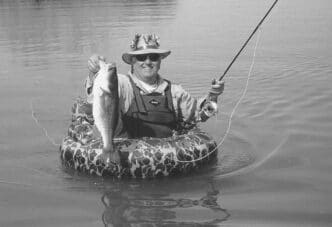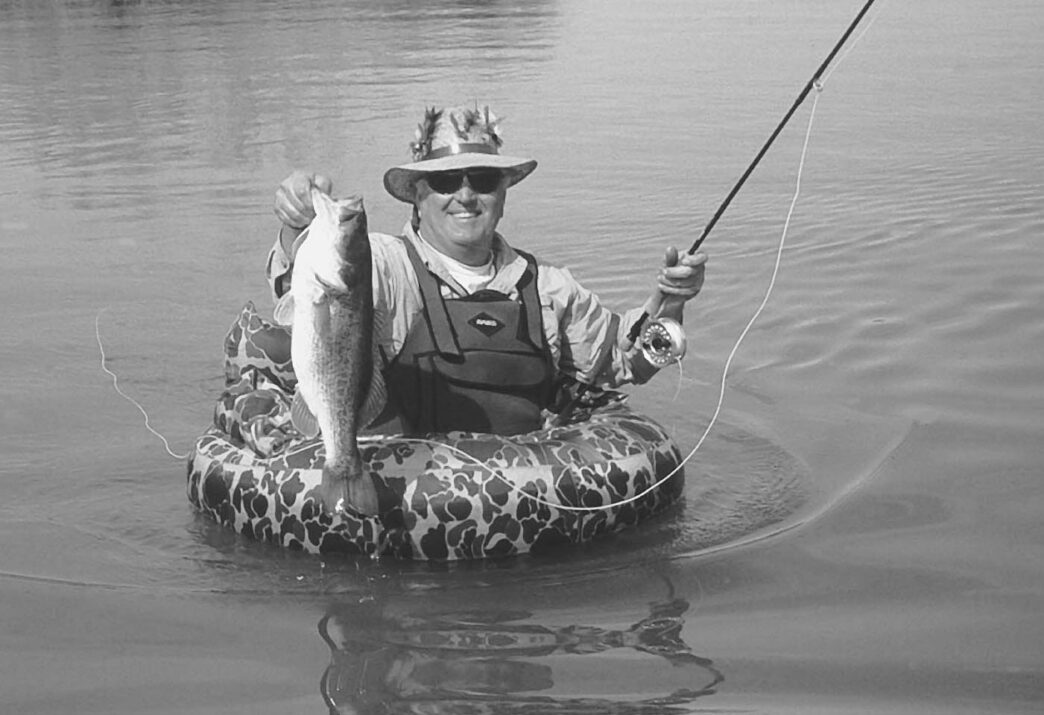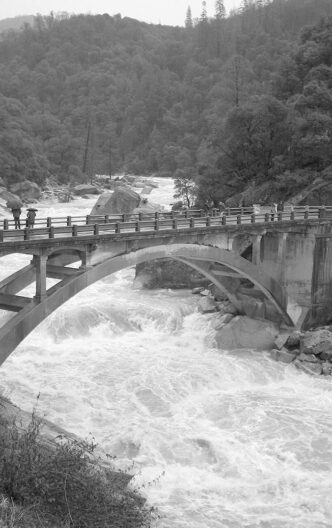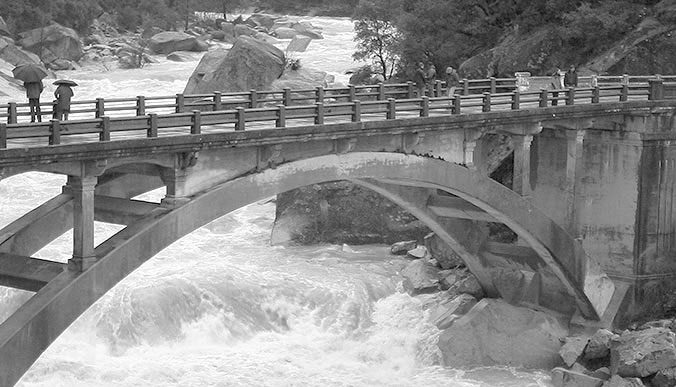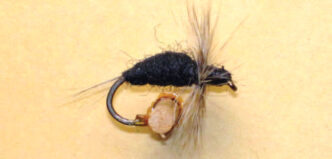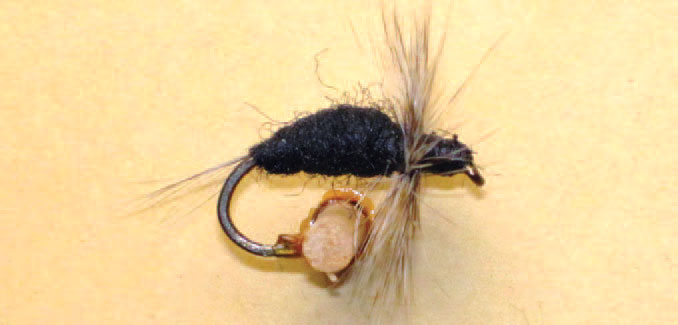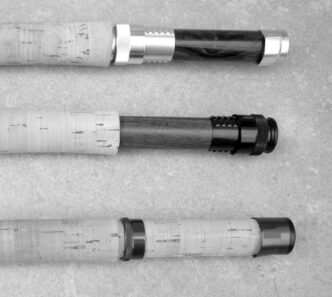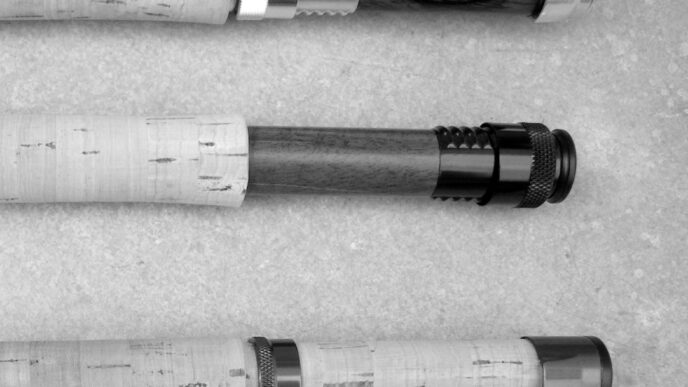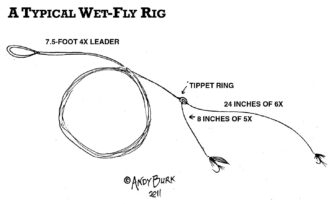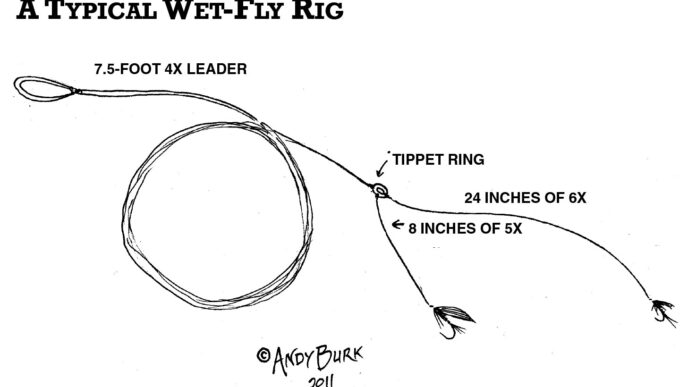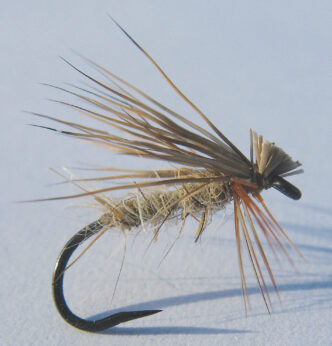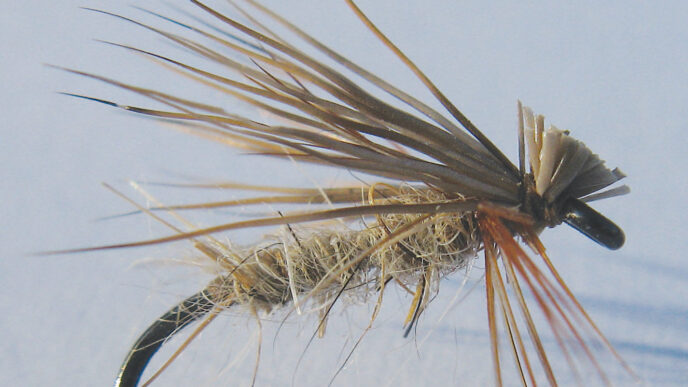The lasting impression you take away from meeting bass-bug tyer Cliff Hamilton at a Southern California fly-fishing show is one of good humor. He’s usually smiling as he ties his signature fly-rod poppers and other bass and saltwater flies. He’s a big guy, and perhaps that’s why he ties big flies, his large hands moving expertly around the vise as he adds materials to yet another bass bug.
Actually, Cliff is pursuing a part of the fly-tying craft he picked up from another tyer. The late Hank Neverka was a well-known fly angler who fished primarily for bass, rather than trout, and his Bass Poison brand of cork popping bugs were stocked in most of the fly shops and sporting-goods stores across Southern California. In a sense, I, too, am a student of Hank Neverka’s brand of bass-bug fishing. I first met Hank at a club meeting sometime in the 1970s. He used to speak at club meetings with a grainy, often jerky 8-millimeter film he’d made of fly fishing for largemouth bass on the lower Colorado River around Martinez Lake, on the Arizona side of the river just above Yuma.
The production values of the film were pretty awful. However, a few minutes into the thing, you began to realize this guy was catching bass — big bass, and lots of them. By the time Hank finished the film and got started talking equipment and tactics (at each of his shows, he sold bass bugs, float tubes, and fins for bass fishing), you were ready to buy whatever he was selling and head for the water. I certainly did, purchasing several float tubes for myself and my sons and a selection of Hank’s popping bugs.
My wife and I actually sold the Bass Poison poppers as part of a mail-order flyfishing business we ran for several years. It did well enough to keep going, but never quite enough to allow us to do it full-time. This was pre-Internet, and without a Web site to promote products, such small businesses regularly disappeared.
Cliff Hamilton got to do something I did not. He got to fish with Hank, learning the ropes of bass-bug fishing at Hank’s favorite fishing destination, the lower Colorado River above Yuma. He also learned to tie bass bugs from Hank. And when Hank’s health began to fail, he asked Cliff if he would continue tying the Bass Poison popper and keep it in front of the public. Cliff ties them commercially, mostly these days for Bob Marriott’s Flyfishing Store in Orange County.
Like the original bass popper tied by Hank, Cliff’s bugs are not unique, but are examples of a well-crafted cork popper built from good materials. They will take a severe beating in a day of fishing, and when they finally do accumulate a veneer of tooth marks, chips, and scratches from being tossed into heavy brush and yanked from the cavernous mouths of bass, they continue to produce strikes.
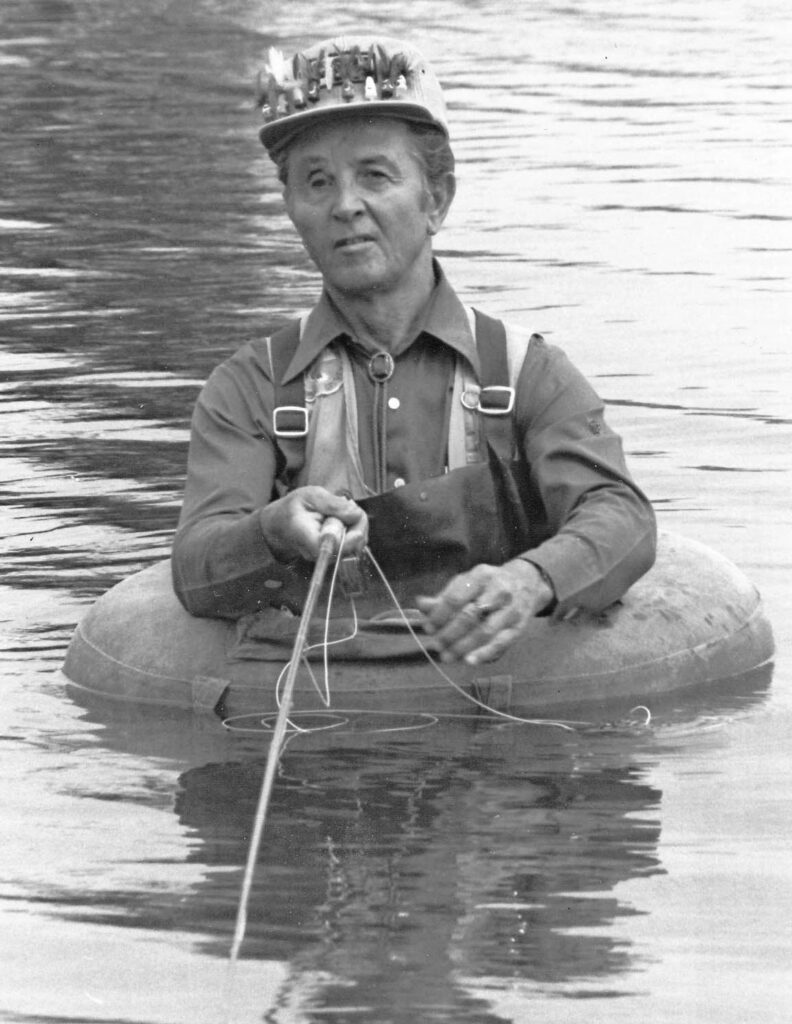
“I’ve been fishing for bass since I was a kid,” Cliff told me recently. “A lot of that was with a fly rod, but I was grown before I really got into it. When I started fly fishing for bass with Hank, I was using his poppers, but I didn’t really know what I was doing. I would trail along behind Hank and try to imitate him. This was at Martinez Lake on the Colorado. We both loved the area, and Hank almost always caught a lot of fish there using a fly rod and his poppers. Hank fished pretty fast, jumping from the boat into the float tube, fishing a hole for a few minutes, then getting back into the boat and heading for another likely looking spot.
“I fished a lot slower than Hank. If I spotted a fish, I’d keep after it. He would try it a couple of times and move on.” (Hank knew there were lots of aggressive bass to cast to at Martinez, and he’d leave the hesitant fish to go for the biting kind.) “He’d go from pothole to pothole and would catch a lot of fish each day.”
Since he got into fly fishing via a master of bass fishing, Cliff didn’t catch on to the trout-centric fishing mania that affects most fly anglers. He had fished with a fly rod without taking the time to learn how to cast well, since in most bass fly fishing, the casts are short and straight. He recalls getting his first solid instruction on casting from another pair of memorable figures in Southern California fly angling.
“I got my instruction from Dave and Freddie Cox,” Cliff remembered. Dave and his wife “Freddie” (actually Frederica) were original members of the Saltwater Flyrodders group and spent a lot of their time casting big flies for saltwater species along the coast, giant corvinas on the Salton Sea, and striped bass on the Colorado River. For a long time, the pair were casting instructors for Fenwick Rods. “I was fishing at Lee’s Ferry,” Cliff said, “using lures and bait, and I had an old Garcia fly rod before that, but had never learned to match the line to the rod or any of that. I was drowning worms, and when the river dropped, as it did in the afternoon, we could see these two people fly fishing for the trout. One was calling out locations to cast to, and the other was putting the casts down and catching some big fish. That was Dave and Freddie. I met them and discovered they lived not far from where I had a vacation trailer in Willow Valley, Arizona, on the Colorado River, so I asked them to teach me to cast. That’s how I really got started.
“When I first started fishing with Dave and Freddie, the first fly I tied was Dave’s Delta Fly, a bucktail streamer tied as a white shad imitation that he and Freddie developed for striped bass.”
I’ve tied and fished this fine bucktail pattern myself. It was a featured fly in John McKim’s long-running fly column in Western Outdoors magazine many years ago, and I’ve kept the tying instructions for this very effective bass and striper fly.
“Once I caught a few stripers,” Cliff said, “I went to the potholes on Topock Marsh [on the Colorado River near Needles, California] and some of the spots on the Indian reservations and fished for both largemouth bass and stripers. I got my biggest bass, an eight-pound largemouth, near Martinez on one of my poppers in 2002 or 2003.
“On flies, I’ve caught bass of all kinds, and most of the trout species. I caught a blacktip shark in Hawaii. I caught a blue marlin in Hawaii and broke him off after three hours. That was on a popper, one of those big foam things. Until the last few years, I never did a lot of trout fly fishing. Now I go to Alaska for big rainbow trout and also fish saltwater down in Baja. I’ve caught some big roosterfish down there on flies. I caught a dorado off the beach on a fly.”
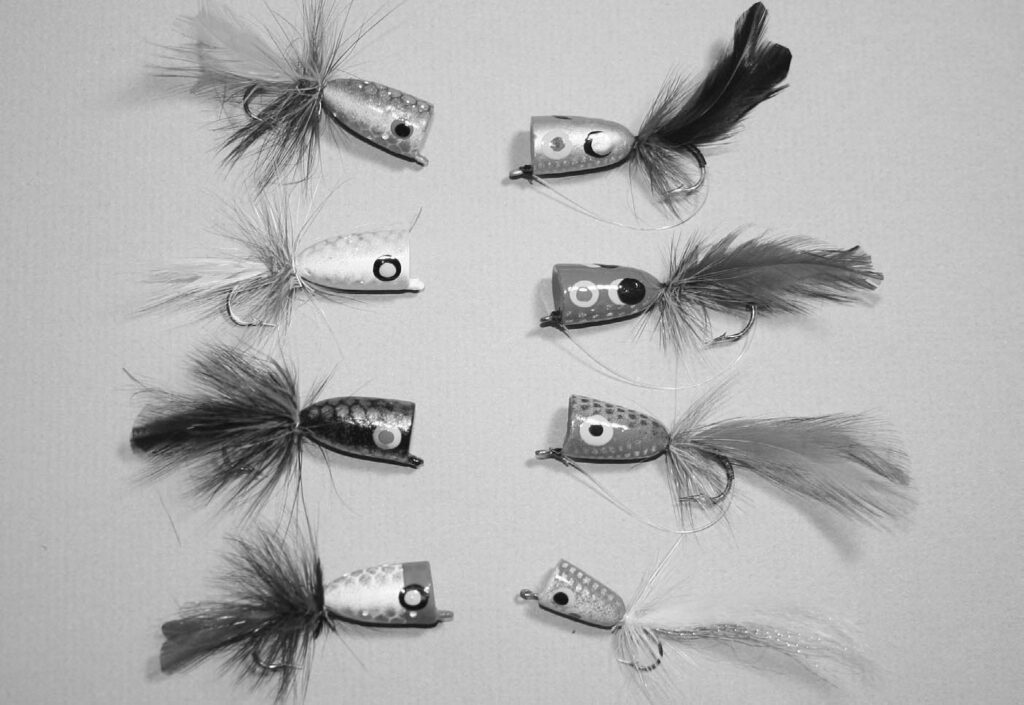
The list of fish Cliff Hamilton has caught on his poppers and flies is much longer than that. It includes everything from big brown and rainbow trout, to salmon in Alaska that fell head over heels for a big popper cast across their heads, to a 20-pound pike from Lake Mary, near Flagstaff, Arizona, to most of the bass species. “I will fish for any fish that swims,” Cliff laughed. “I’ve caught brown trout and silver salmon on my poppers. I tie a reversed cork popper as a slider and have painted it hot pink and used it for silver salmon in Alaska. One trip, I caught the first three salmon on a pink slider, and nobody else had caught anything. That was at Rainbow River Lodge, in Iliamna. I started going there in the nineties.
“I’ve caught smallmouths on the Colorado River near Blythe. I have what used to be a world record lake trout at Great Bear Lake in Canada, 1989. I caught it on a 5/0 Clouser Minnow. It weighed 21 pounds 8 ounces. I’ve caught arctic grayling. When I caught a 20-pound pike at Lake Mary, I thought I had a state record, but it was just short. I’ve caught redfish and snook, tarpon, stripers, jack crevalles, and barracudas.
“My wife talked me into flying to Hawaii by saying, ‘You haven’t caught a peacock bass yet.’ They have them in many of the reservoirs in the Islands. So we went. She knows I will take her anyplace where there’s a fish I haven’t caught. So we went to Hawaii. They do eat that popper pretty well.”
It’s a pretty impressive list of accomplishments. Too many fly fishers restrict their fishing to trout and miss out, I think, on the great fun of tying flies for and catching a wide array of different kinds of fish. Cliff agrees with me on this, noting that the fun comes from the unexpected.
Cliff works as a repair specialist on large commercial pumps, but at age 63 he is looking forward to retirement and more free time to tie — and, of course, to fish his fly patterns.
“There for awhile, when I was tying hot and heavy, I was ordering 20 to 50 dozen heads at a time from my supplier,” Cliff said. “Some years, I bought two orders. Hank tied them only in size 1/0. I had a lot of fly fishermen who wanted smaller poppers, so I started offering them in size 4, and some wanted tiny ones for panfish, so I started offering them in size 10, 12 , 6, 2, 4 — you name it. Once I retire, I will tie more.” The next time you attend a fly-fishing show or event in Southern California, look around for Cliff Hamilton in the tyers’ area. He’s fun to talk to, interesting to watch tie, and just may get you into more warmwater tying and fishing.



